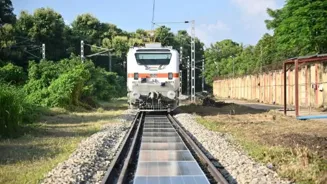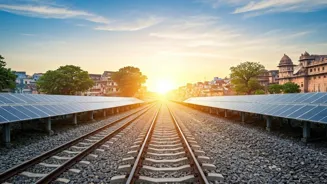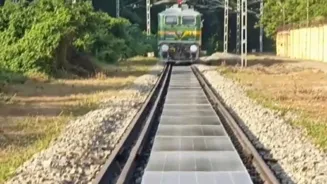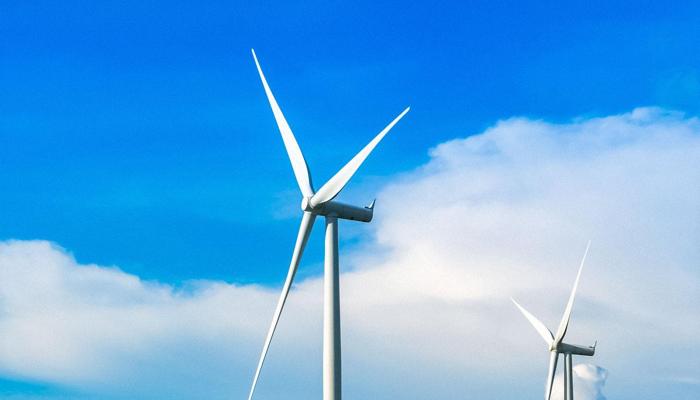What is the story about?
Indian Railways has begun experimenting with solar panels on railway tracks, in a first for the country. The initiative was launched at Banaras Locomotive
Works (BLW) in Varanasi, where a 70-metre stretch of track has been fitted with panels designed to generate clean power without consuming extra land. The Ministry of Railways called it a move “towards green and sustainable rail transport” as it shared images of the pilot installation on social media.
What Makes The System Different
This solar innovation stands out because it does not require dedicated large parcels of land, which is often the biggest hurdle for renewable projects in India. Rail tracks run through thousands of kilometres of already secured land, so fitting solar panels in between the rails offers a ready-made platform.
The design also ensures ease of maintenance. The panels are mounted in a way that they can be removed and reinstalled quickly, allowing railway workers to access the tracks for inspections, repairs, or emergencies without long delays. This modular feature makes it more practical than traditional ground-mounted systems.
Another advantage is that the panels are laid flush with the tracks, reducing the risk of obstruction. Officials said the panels are built to withstand vibrations from passing trains, dust accumulation, and exposure to rain and heat — conditions that are harsher than rooftop or open-field solar farms.
The Varanasi pilot uses 28 high-strength photovoltaic panels, collectively capable of producing 15 KWp. While this may sound modest, the principle is scalable. On larger stretches, the system could potentially generate hundreds of megawatts of clean energy without occupying any extra land.
Importantly, this track-based system opens the possibility of dual use of infrastructure. While trains continue to run on the tracks above, the space below simultaneously generates electricity. For land-scarce countries like India, this dual use is a major breakthrough.
Why It Could Be Gamechanger For Indian Railways
Indian Railways runs one of the world’s largest rail networks, stretching over 1.2 lakh km. A system like this could, in theory, turn vast sections of that network into power-generating corridors.
Energy costs remain one of the biggest expenses for the Railways, with the network consuming nearly 20 billion units of electricity annually. A successful rollout of solar-embedded tracks could help offset part of this demand and reduce dependence on conventional power sources.
The project also dovetails with India’s broader renewable push. By 2030, Indian Railways has pledged to achieve net-zero carbon emissions, and incorporating solar into existing infrastructure is seen as an efficient way to get there without acquiring new land.
Moreover, solar-equipped tracks could supply power not just for stations and workshops but also for running auxiliary rail systems like signalling, lighting, and electrification support, thereby making operations more self-reliant.
If scaled up, the move could make Indian Railways not just a consumer of clean energy, but also a producer, feeding excess power into state grids and strengthening the country’s renewable footprint.
Global Parallels
Similar ideas are being tested abroad. In Switzerland, start-up Sun-Ways has designed solar panels that can be rolled out on tracks like a carpet and removed when required. The project, developed with the Swiss federal technology institute EPFL, is set for a three-year trial in Neuchatel beginning 2025.
“There are over a million kilometres of railway lines in the world. We believe 50 per cent could be equipped with our system,” Sun-Ways co-founder Baptiste Danichert has said, as per Sustainability Magazine.
While the Swiss experiment has sparked debates on safety, it highlights the growing global push to find creative ways of generating solar power without occupying new land.
The Road Ahead
For now, the Varanasi installation remains a small pilot. But if the idea works at scale, India could tap into the vast surface area of its rail network to produce clean energy — all without building new solar farms.
The project may be modest in size, but it marks the beginning of a potentially transformative approach to powering the trains of the future.
Do you find this article useful?














